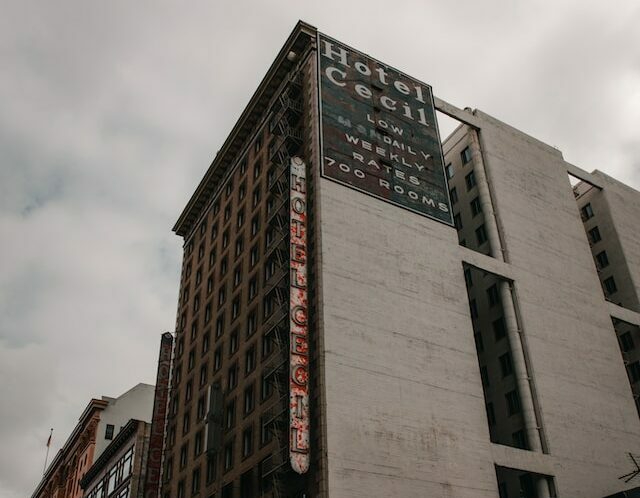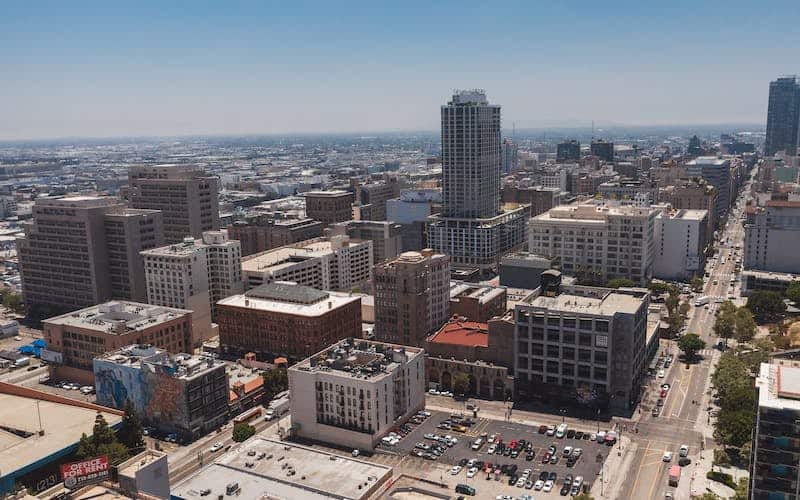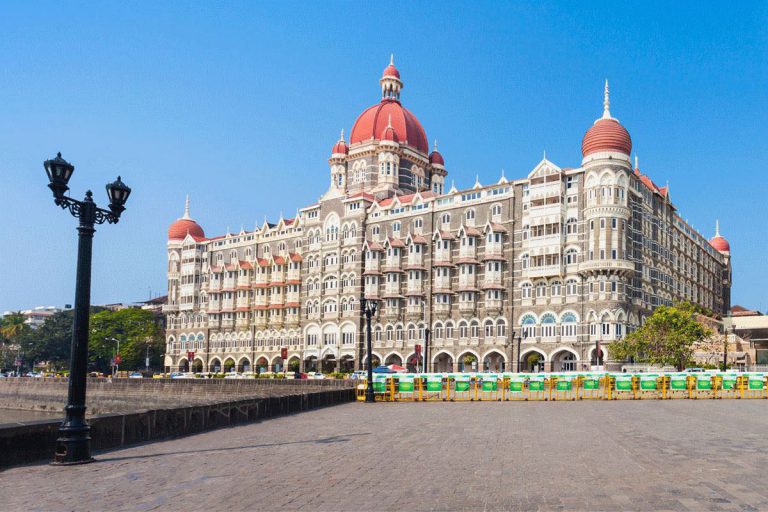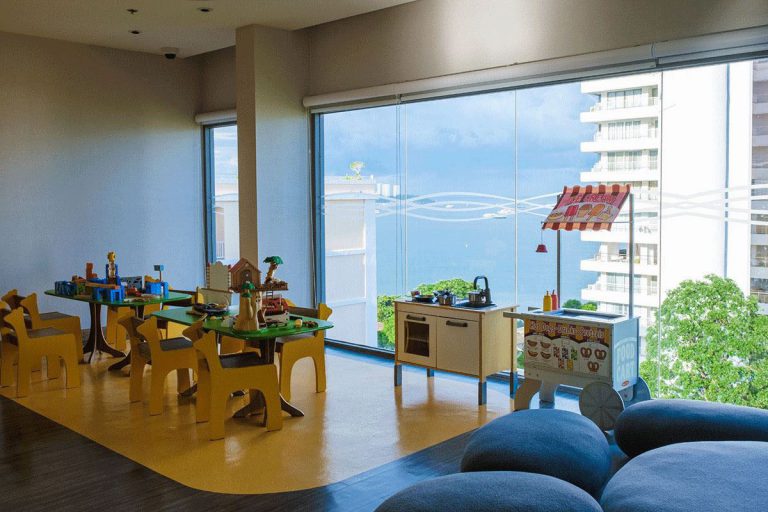The Cecil Hotel in downtown Los Angeles earned a reputation over many decades as a place where suspicious deaths and crimes occurred. After a long history of tragic events and unsolved mysteries, the hotel was finally forced to shut down.
If you’re short on time, here’s a quick answer as to why the Cecil Hotel got shut down: Continuous deaths, suicides, and crimes like the 2013 death of Elisa Lam gave the Cecil a dark reputation. With changing downtown LA property values, new owners sought to rebrand and renovate it, leading to its closure in 2017.
In this comprehensive article, we’ll explore the troubled history that led to the Cecil’s closure after 90 years, from its early roots to its rebranding and failed revival in its final years.
The Cecil’s Earliest Notoriety for Suicides and Murders
The Cecil Hotel, which opened its doors in 1927, quickly gained a reputation for being associated with a series of tragic events. Despite its initial intention to be an upscale destination for tourists, the hotel soon became notorious for its dark history.

Opened in 1927 as Upscale Destination
When the Cecil Hotel first opened, it was considered one of the finest hotels in Los Angeles. With its luxurious accommodations and prime location in downtown LA, it attracted wealthy travelers and businessmen alike.
The hotel boasted opulent decor, a spacious lobby, and a rooftop garden that offered breathtaking views of the city.
Site of Early Suicides and Violent Crimes
However, it didn’t take long for the Cecil Hotel to gain a reputation for being a site of tragedy. In the early years of its operation, a number of suicides and violent crimes occurred within its walls.
The hotel’s dark history began to overshadow its glamorous image, and guests started to feel uneasy about staying there.
One of the most notable incidents was the case of Dorothy Jean Purcell in 1947. She gave birth to a baby boy in her hotel room and, believing the infant to be stillborn, threw him out of the window. This shocking event shocked the nation and further tarnished the hotel’s reputation.
Dubbed “Suicide Hotel” by the 1950s
By the 1950s, the Cecil Hotel had earned the nickname “Suicide Hotel” due to the alarming number of suicides that took place there.
It seemed as though the hotel attracted individuals who were already contemplating ending their lives. The eerie atmosphere and the hotel’s association with tragedy made it a magnet for those seeking a tragic end.
The most infamous case of suicide at the Cecil Hotel was that of Elisa Lam in 2013. Her mysterious death, which was captured on surveillance footage showing her behaving erratically in an elevator, attracted international attention and renewed interest in the hotel’s dark history.
Despite attempts to rebrand and renovate the hotel over the years, the Cecil could never fully escape its notorious past.
The numerous suicides and violent crimes that occurred within its walls will forever be a part of its legacy. For more information about the history of the Cecil Hotel, you can visit Crime Museum.
Continued Violence and Mystery Through the 1980s and 90s
The Cecil Hotel in Los Angeles experienced a series of violent incidents and mysterious occurrences throughout the 1980s and 90s, contributing to its infamous reputation. These incidents not only resulted in tragic loss of lives but also fostered an environment of fear and unease within the hotel and its surrounding neighborhood.
Let’s delve into some of the key events that took place during this tumultuous period.
1984 Ramirez Murders and Other Violent Crimes
One of the most notorious events associated with the Cecil Hotel is the series of murders committed by Richard Ramirez, also known as the Night Stalker.
In 1984, Ramirez stayed at the hotel during his killing spree, which claimed the lives of at least 13 victims. The brutality and frenzied nature of these murders shocked the entire city, further tarnishing the hotel’s reputation.
In addition to the Ramirez murders, the Cecil Hotel also witnessed numerous other violent crimes during this time. From robberies to assaults, the hotel became a hotbed for criminal activity. This continuous stream of violence not only put the hotel’s guests and staff at risk but also created an atmosphere of fear for the local community.
Drug Use and Prostitution Become Widespread
As the 1980s and 90s progressed, the Cecil Hotel became a hub for drug use and prostitution.
The combination of a transient population and the hotel’s affordable rates made it an attractive location for individuals involved in illicit activities.
Drug dealers and sex workers frequented the premises, leading to an increase in criminal behavior and exacerbating the hotel’s already tarnished reputation.
Reports of drug-related incidents and prostitution were not uncommon, with guests and residents often witnessing these activities within the hotel premises. The presence of such illegal activities further contributed to the hotel’s notoriety and made it an undesirable place to stay for law-abiding individuals.

Persistent Crime Scares Visitors Away
The ongoing violence and criminal activities at the Cecil Hotel had a significant impact on its reputation as a tourist destination.
Visitors to Los Angeles began to associate the hotel with danger and crime, leading to a decline in bookings and occupancy rates.
The persistent reports of violence and criminal incidents created a negative perception that was hard to shake off, ultimately leading to the closure of the hotel.
Despite efforts by the management to improve security and address the issues, the hotel struggled to regain its previous standing as a reputable establishment. The legacy of violence and mystery associated with the Cecil Hotel during the 1980s and 90s ultimately played a pivotal role in its downfall.
The 2013 Death of Elisa Lam at the Cecil
In 2013, the mysterious death of Elisa Lam at the Cecil Hotel in Los Angeles gained international attention and sparked a wave of scrutiny on the hotel and its history.
Lam, a 21-year-old Canadian student, was last seen alive on January 31st, 2013, and her body was later discovered in a water tank on the hotel’s rooftop. The circumstances surrounding her death raised numerous questions and fueled speculation about the hotel’s involvement.
International Attention and Scrutiny on Lam Case
The case of Elisa Lam captivated the public’s imagination and attracted widespread media coverage.
The eerie surveillance footage of Lam behaving erratically in an elevator just days before her disappearance added to the intrigue. The video went viral on social media platforms, with people around the world eagerly discussing and analyzing the strange behavior exhibited by Lam, which only deepened the mystery.
The case also highlighted the dark history of the Cecil Hotel itself. Known for its association with crime, suicides, and other infamous events, the hotel had already acquired a notorious reputation even before Lam’s death.
This, coupled with the mysterious circumstances surrounding her demise, intensified the interest and scrutiny surrounding the case.
Conspiracy Theories Spread About Hotel’s Role
As news of Elisa Lam’s death spread, conspiracy theories began to emerge, suggesting that there was more to the story than initially met the eye.
Some speculated that the hotel’s dark history and alleged paranormal activity played a role in Lam’s demise. Others questioned the official investigation, proposing alternative theories about foul play or a cover-up.
While these theories were largely unfounded, they gained traction online, with numerous websites and forums dedicated to discussing and dissecting the case. The fascination with the Cecil Hotel and its connection to Lam’s death led to a surge in public interest and speculation, further cementing the hotel’s notoriety.
Lam’s Death Deals Blow to Cecil’s Reputation
The death of Elisa Lam had a significant impact on the reputation of the Cecil Hotel. The incident brought renewed attention to the hotel’s troubled past, leading to a decline in occupancy rates and tarnishing its image.
The Cecil Hotel, once a bustling establishment, became a symbol of darkness and tragedy, with tourists and potential guests choosing to stay elsewhere.
Following Lam’s death, the hotel underwent a rebranding effort in an attempt to distance itself from its notorious history.
In 2011, it was announced that the Cecil Hotel would be renamed the “Stay on Main” and would feature a mix of hotel rooms and long-term residential units. However, the name change alone was not enough to shake off the hotel’s haunted reputation.
Despite the closure of the Cecil Hotel in 2017, the legacy of Elisa Lam’s death and the subsequent international attention it garnered continue to resonate. The case serves as a reminder of the power of media scrutiny and the lasting impact of a tragic event on a location’s reputation.

Failed Attempts to Revamp Hotel’s Image and Purpose
Over the years, the infamous Cecil Hotel in Los Angeles has made headlines for all the wrong reasons.
Despite its rich history and architectural significance, the hotel has struggled to shake off its dark past. Several attempts have been made to revamp its image and purpose, but unfortunately, they have all fallen short.
Cecil Rebrands as Stay on Main in 2011
In an effort to distance itself from its notorious reputation, the Cecil Hotel underwent a rebranding in 2011 and was renamed “Stay on Main.”
The hotel underwent renovations, and the management aimed to attract a younger, hipper crowd by offering affordable accommodations and trendy amenities. However, even with the new name and fresh look, the hotel struggled to attract guests who were aware of its troubled history.
The rebranding campaign included a new website, social media presence, and marketing efforts to promote the hotel as a safe and stylish destination. While these efforts did generate some interest initially, the hotel’s dark past continued to overshadow any positive changes that were made.
Momentum of Revitalization Slows After 2013
After the rebranding, the Cecil Hotel initially saw a slight increase in occupancy rates and positive reviews. However, the momentum of revitalization began to slow down after 2013. The hotel faced a number of challenges, including competition from newer hotels in the area and the negative association with its past.
Additionally, the surrounding neighborhood faced its own struggles with crime and homelessness, which further deterred potential guests from choosing the Cecil Hotel as their accommodation of choice.
Unable to Shake Infamous Reputation
Despite efforts to rebrand and revitalize, the Cecil Hotel was unable to escape its infamous reputation. Its association with several high-profile crimes, including the mysterious deaths of Elisa Lam and the notorious serial killer Richard Ramirez, continued to haunt the hotel.
Online reviews and discussions about the hotel often mentioned its dark past, making it difficult for the management to attract a diverse range of guests. The negative publicity surrounding the hotel ultimately led to its closure in 2017.
While the Cecil Hotel’s closure may come as a disappointment to some, it serves as a reminder that a tarnished reputation can be challenging to overcome, no matter how many efforts are made to rebrand and revamp.
The story of the Cecil Hotel stands as a cautionary tale for those in the hospitality industry, highlighting the importance of maintaining a positive image and addressing any negative associations head-on.
Final Decision to Shut Down the Hotel for Redevelopment
After years of controversy and a dark history, the infamous Cecil Hotel in downtown Los Angeles made its final decision to shut down for redevelopment.
The hotel, which gained notoriety for its association with crime and mysterious deaths, had become a symbol of the city’s dark past. However, it was not just the hotel’s dark history that led to its closure, but a combination of factors that ultimately sealed its fate.
Downtown LA Property Values Increased Pressure
One of the main factors that contributed to the closure of the Cecil Hotel was the increased pressure from rising property values in downtown Los Angeles. Over the years, the area had undergone significant revitalization and gentrification, with new developments and luxury properties springing up all around.
As property values soared, the owners of the Cecil Hotel found themselves facing mounting financial challenges. The maintenance and upkeep of the aging building became increasingly costly, making it difficult to keep up with the competition.

New Owners Saw More Value in Land Than Hotel
When new owners took over the Cecil Hotel, they recognized that the value of the land on which the hotel stood far outweighed the value of the hotel itself. The prime location in downtown LA made it an attractive site for redevelopment, offering endless potential for new commercial or residential projects.
The decision to shut down the hotel and redevelop the property was driven by a desire to capitalize on the booming real estate market in the area.
Closed in 2017 With Plans for New Development
In 2017, the Cecil Hotel finally closed its doors to the public, marking the end of an era. The owners announced their plans for a new development that would replace the infamous hotel.
While the specific details of the redevelopment project were not immediately disclosed, it was clear that the new owners saw an opportunity to transform the site into something more in line with the changing landscape of downtown LA.
Today, the site where the Cecil Hotel once stood is a testament to the ever-evolving nature of urban development. As the city continues to grow and change, iconic landmarks like the Cecil Hotel may be lost, but they are replaced by new and exciting ventures that shape the future of the city.
Conclusion
With a history plagued by unsolved mysteries, crimes and scandals over its 90-year tenure, the Cecil Hotel became a dark icon of downtown LA.
The hotel tried rebranding itself, but the 2013 death of Elisa Lam reinforced its reputation as a place of tragedy. As the neighborhood changed, the new owners realized the Cecil’s infamy couldn’t be overcome.
With its closure in 2017, one of LA’s most storied and infamous hotels finally shut its doors, destined to be redeveloped and replaced by new projects.






